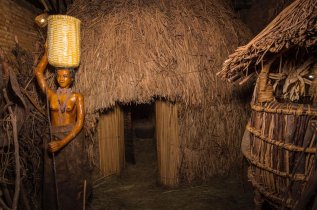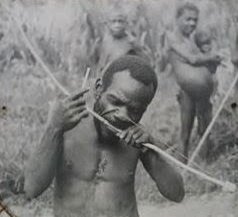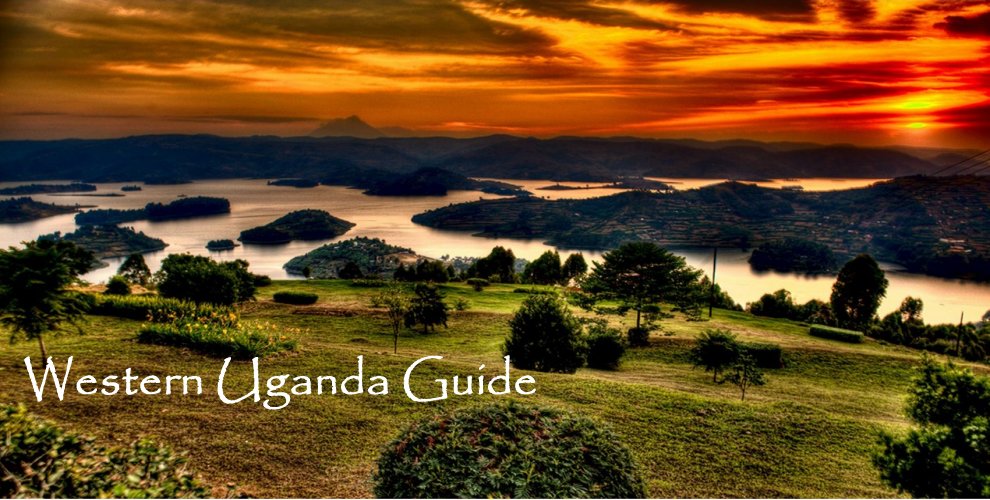Kabale History
 When exploring the history of Kabale it should be noted that modern day
nation states such as Uganda, Rwanda, DRC and Tanzania did not exist and
areas were defined by their people and clans rather than the imposed and
often arbitrary boundaries forced on the area by white Europeans during
and after the 1884-1885 Conference of Berlin. Even today many of the people
from this area see themselves as part of a wider east African community
than citizens of post colonial states.
When exploring the history of Kabale it should be noted that modern day
nation states such as Uganda, Rwanda, DRC and Tanzania did not exist and
areas were defined by their people and clans rather than the imposed and
often arbitrary boundaries forced on the area by white Europeans during
and after the 1884-1885 Conference of Berlin. Even today many of the people
from this area see themselves as part of a wider east African community
than citizens of post colonial states.
Kabale itself
means "a small stone" and was so named after a piece of local iron that
was so heavy that people visited from far and wide to see and handle it.
The town is located within an area inhabited mainly by the Bakiga (people
of the highlands) of Rukiga (highlands), the Bahororo of Rujumbura and the
Banyarwanda people of Bufumbria, home to the volcanic Muhavura Mountains
and Bwindi National Forest.
Modern day
Kabale was formerly part of Empire of Kitara that straddled the great
lakes area of Africa until it was broken up and superseded by smaller
kingdoms during the 16th century. By 1650 the Mpororo Kingdom had been
established in the area encompassing present-day northern Rwanda and
Western Uganda ~ mostly the present-day Kabale and Ntungamo Districts. However,
within a hundred years, this kingdom had fractured and whilst parts were
absorbed into the more northern Nkore kingdom, what was to become the
Kabale area was then nominally ruled by the Batutsi of Rwanda although,
in reality, the fiercely independent nature of the locals made them
subject to no-one, and, as such, they operated largely autonomously and
untroubled by the encroaching outside world. (Research from the 1930s
concluded that the people were "united only in their disunity" whilst a
contemporaneous Anglican missionary wrote in May 1921 "They have no King
and everyone seems to do just as he pleases" whilst the British Western
Province Annual Report of 1913-14 concluded "discipline and obedience
among themselves are to them unknown quantities.")
 By
the time the Europeans arrived in the region in the late nineteenth century,
the area was little more than a chiefdom ruled over by a Omukama as part
of the former Mporora Kingdom. The British, Germans and Belgians all
attempted to establish hegemony over the area but each was unable to
establish a viable boundary not least because of the topography of the
area ~ making it known as the Switzerland of East Africa given its
mountainous terrain ~ rising from 3,000ft above sea level at Lake Edward
to 13,500 feet above sea level in the far south-west.
By
the time the Europeans arrived in the region in the late nineteenth century,
the area was little more than a chiefdom ruled over by a Omukama as part
of the former Mporora Kingdom. The British, Germans and Belgians all
attempted to establish hegemony over the area but each was unable to
establish a viable boundary not least because of the topography of the
area ~ making it known as the Switzerland of East Africa given its
mountainous terrain ~ rising from 3,000ft above sea level at Lake Edward
to 13,500 feet above sea level in the far south-west.
Indeed when the first British political officer toured the area in 1910
he reported that the country was "a mass of broken hills" making the
workload for his porters "very arduous." In fact it took him five days
to walk from one end of the highlands to the other. Eventually the
British were to gain the upper hand over their colonial rivals, albeit
it largely ignored by the locals although occasionally insurrections
erupted when the colonials attempted to impose their unwanted
administrative will over the independent local population.
Around the
turn of the nineteenth century the British began to subsume the Kingdoms
of Buganda, Nkore and others into a protectorate rather than colony, and,
as such, the six chiefdoms that had emerged from the broken Mporora kingdom
including the Rukiga were considered too small to deal with separately so
an instruction went out that they were to subjugate themselves to the rulers
of the Nkore Kingdom which later became subject to the Ankole Agreement
of 1901. With that present day Kabale became a town within the new country
of Uganda, albeit a country that was little more than an area defined by
not being one of its neighbours.
 Despite
this, the British and other Europeans had very little actual physical presence
in the area. Indeed by 1931, a full thirty years after the Ankole Agreement
was signed and implemented, in the Kabale area there were just thirty-three
resident white Europeans, eighty-six Indians and six Arabs compared with
a local indigenous population of just under a quarter of a million people.
Despite
this, the British and other Europeans had very little actual physical presence
in the area. Indeed by 1931, a full thirty years after the Ankole Agreement
was signed and implemented, in the Kabale area there were just thirty-three
resident white Europeans, eighty-six Indians and six Arabs compared with
a local indigenous population of just under a quarter of a million people.
Through-out this period there was ongoing resistance to colonial rule,
even if that rule was largely administered by local chiefs and kings rather
than directly such as in neighbouring Kenya. At the heart of this movement
known as the Nyabingi Resistance (1910 ~ 1930), two figures stand out; Ntokibiri,
a former Belgian colonial army deserter who left with other Africans with
many weapons, and Ndungutse, a prince of Rwanda’s Banyiginya dynasty who
had fled to the area after plotting a coup attempt in Rwanda that proved
unsuccessful.
Ntokibiri
carried out guerrilla attacks against the Belgians and British; his tactics
described by local British military leader Maj. Lawrence as “a master of
the situation, there were no roads, very hilly country, look out huts and
signal fires on every hill and every native as far as lay in his power apparently
under [Ntokibiri]’s control-none of whom we could touch”. However Ntokibiri
was shot dead on 21st June 1919 and two of his men executed by public hanging
in Kabale six months later to act as a warning to other insurgents. The
fate of the other resistance leader, Ndungutse, remains unclear, though
he was certainly dead by 1930 when the last of the resistance against colonial
rule had largely dissipated.
Through-out this period there was ongoing resistance to colonial rule, even if that rule was largely administered by local chiefs and kings rather than directly such as in neighbouring Kenya. At the heart of this movement known as the Nyabingi Resistance (1910 ~ 1930), two figures stand out; Ntokibiri, a former Belgian colonial army deserter who left with other Africans with many weapons, and Ndungutse, a prince of Rwanda’s Banyiginya dynasty who had fled to the area after plotting a coup attempt in Rwanda that proved unsuccessful. Cont/...

